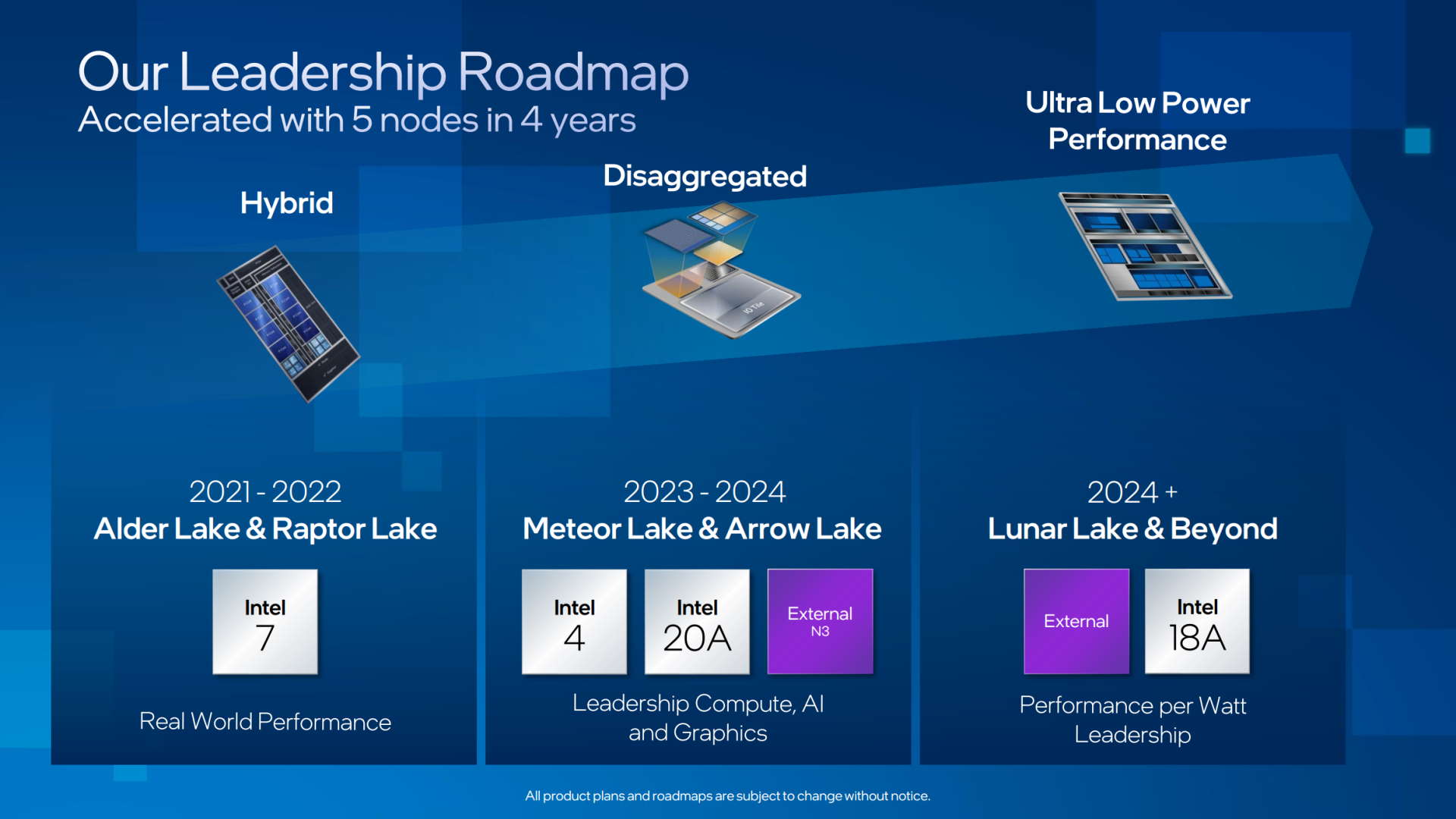Intel's reported 3nm chip deferment hints at a delay to Arrow Lake CPUs
Intel's woes allegedly continue with speculation that Arrow Lake has been delayed to 2025.

Could Intel's next-gen Arrow CPU family be delayed to 2025? That's the latest speculation born of Taiwan.
More specifically, Digitimes (via Techpowerup) reckons Intel has pushed out its orders for 3nm wafers from TSMC to the final quarter of of 2024. Those 3nm wafers are supposed to contain the graphics tiles for the future CPUs sporting the Arrow Lake architecture.
Realistically, if TSMC doesn't start fabbing the 3nm iGPU tiles until the end of 2024, and Arrow Lake depends on those same 3nm GPU tiles, there's little chance of actual Arrow Lake CPU availability until well into 2025. Meanwhile, Arrow Lake currently appears on Intel's public roadmaps for 2024, as do 3nm GPU tiles sourced from TSMC.
And so the expectation is now that Arrow Lake is to be delayed until 2025. The catch is that Intel doesn't necessarily need to source 3nm GPU tiles for Arrow Lake. Could it just use 5nm tiles? Either way, if the 3nm order has indeed been delayed, something has definitely changed compared with Intel's official roadmap. Which begs the question, why has that 3nm order been pushed out?
Of course, Intel isn't saying anything about a delay to Arrow Lake. At its most recent earnings call in January, the company doubled down on its commitment to begin manufacturing its first chips using Intel 4 silicon later this year.
Those early Intel 4 models will be Meteor Lake CPUs, thought to be closely related to Arrow Lake. Indeed, Arrow Lake CPU tiles are set to be produced on essentially the same internal Intel production node as Meteor Lake.
However, where Meteor Lake runs 5nm TSMC silicon for its GPU tile, Arrow Lake has been publicly listed as upgrading that to 3nm. It's currently unclear which nodes Intel is targeting for each respective generation's SoC and IO tiles.
Keep up to date with the most important stories and the best deals, as picked by the PC Gamer team.
Anywho, as things stand there is a potential conflict between Intel's official stance that Intel 4 and production of retail Meteor Lake chips—be they for desktop or mobile—is just around the corner and the idea that somehow Arrow Lake is delayed until 2025.

Intel certainly has form in this area. It rolled out two generations of 10nm mobile CPUs in Icelake and Tiger Lake before it transitioned its desktop line to 10nm, the node now known as Intel 7.
So, could the same thing be happening with Intel's 7nm node, branded Intel 4? Could it be proving sufficiently problematic that Intel is forced to limit its roll out to mobile CPUs for an extended period, just as it did with 10nm? Or has it just scaled back its GPU plans for Arrow Lake and put the GPU tile onto 5nm?
That's possible, but then you'd have to ask what Intel was planning to make on TSMC 3nm that has now been delayed, according to the 3nm delay rumour.
Ultimately, we'll know when we know, as with any speculative rumour. If that's what is happening, if Arrow Lake is delayed, Intel isn't going to advertise the fact until the last possible moment. If it is true, it's both a pity and a major problem for Intel given its well publicised woes with 10nm.
7nm or Intel 4 was supposed to be the node that got Intel back on track. Indeed, Intel has aggressive plans for follow up 20A and 18A nodes, after which the company is supposed to be back on top, leading the world in terms of chip production tech.
But if Arrow Lake is indeed pushed out to 2025, all of that comes into question. Hopefully, there's something missing here and Arrow Lake is indeed still on track for 2024.
Best CPU for gaming: Top chips from Intel and AMD
Best gaming motherboard: The right boards
Best graphics card: Your perfect pixel-pusher awaits Best SSD for gaming: Get into the game first

Jeremy has been writing about technology and PCs since the 90nm Netburst era (Google it!) and enjoys nothing more than a serious dissertation on the finer points of monitor input lag and overshoot followed by a forensic examination of advanced lithography. Or maybe he just likes machines that go “ping!” He also has a thing for tennis and cars.


